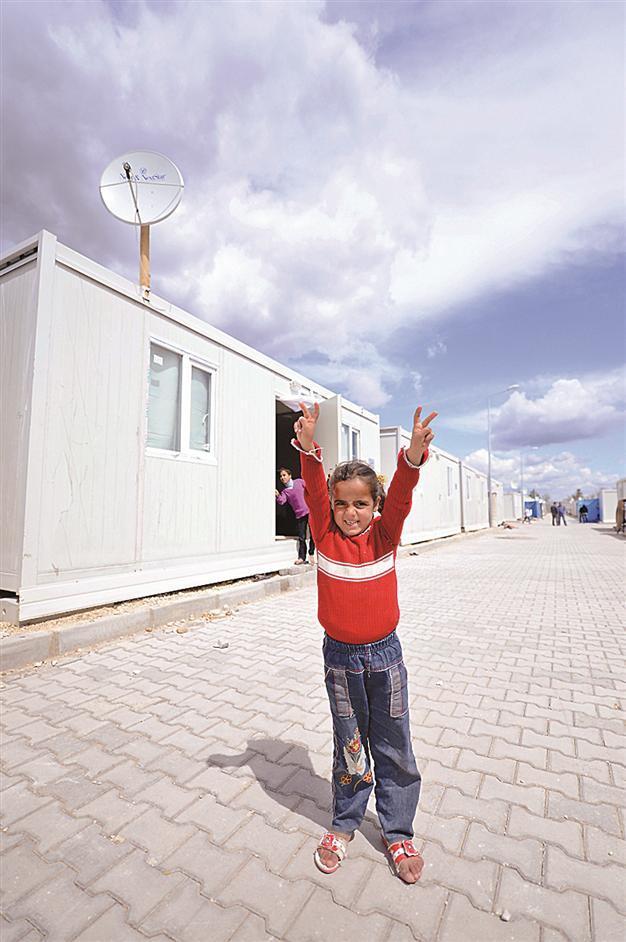Turkey builds ‘dream city’ for migrants
Cansu Çamlıbel KİLİS / Hürriyet

There are a total of 2,060 containers in the camp located in Kilis province hosting Syrians fleeing from violence. HÜRRİYET photo, Levent KULU
The so-called “container city” at Öncüpınar is constructed as a “dream city.” The goal is to create a better environment than that which exists in the tent-city at Hatay for those who are fleeing Bashar al-Assad’s regime.Rather than finding new land, the government has decided to use land that is already used as a hosting center for Turkish pilgrims on their annual pilgrimage to Mecca. Walls have been built at the site to make it a safer place. Now officials are learning from experience that there may be major problems with building a container city right next to the Syrian border.
A construction site
When the number of people arriving from Syria reached 1,000 people per day, Ankara opened the container city for use, about one and a half months before it planned to, on March 16. Much of the container city is still under construction, including buildings such as schools and hospitals. The four-meter high walls to provide security do not yet fully encircle the camp. The aluminum sheets that have been put up where there are no walls are easily broken down.
About 250 camp residents want to go to the market each day. About 100 to 150 of them are allowed to go, and are shuttled to Kilis. Anyone who goes to the market must wait a week for another turn. There are a total of 2,060 containers in the camp. Inside each container are two rooms, as well as an open kitchen and a bathroom. There are three sets of bunk beds in each container. Among the special requests the camp’s residents have conveyed to Deputy Governor Ahmet Karatepe in written form are appeals for assistance with sophisticated infertility treatments and dental care. In order to facilitate communication, the settlement is segmented into five neighborhoods, Atatürk, Cumhuriyet, Fatih, Osman Gazi and Mehmet Akif. Each neighborhood has five translators and five officials representing the office of the governor. Each neighborhood has also elected one representative. A building that will accommodate a shopping mall is under construction, and that building will be the key point from which aid material will be distributed. The Syrians will be able to determine their own needs, identifying themselves using biometric identity cards to which a certain amount of money is credited and which store digital images of their fingerprints. Several local supermarkets from Kilis have been awarded a tender to provide this service. Turkish Red Crescent depots will be used for aid coming from outside. None of the local or international nongovernmental organizations are allowed to enter the camp. The head of the Foreign Ministry’s Middle East Department, Suphi Atan, who has been appointed to monitor the Syrian camps, urges the public not to refer to the Syrians who have fled to Turkey as “refugees” saying that Turkey would have more responsibilities if the fleeing Syrians had official refugee status. “They are Syrian citizens under temporary protection,” Atan said. He explained that they will be “allowed to stay in Turkey as long as they demand temporary protection.”
















